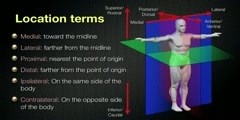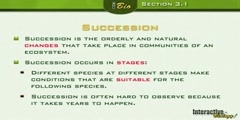Lec 4 - Communities: Key Institutions and Relationships
"Lec 4 - Communities: Key Institutions and Relationships"Early Modern England: Politics, Religion, and Society under the Tudors and Stuarts (HIST 251) Professor Wrightson begins by discussing how modern perceptions of the 'traditional' community have informed the manner in which the early modern social landscape is discussed. From here he moves on to address the lived reality of community and social bonds in the period. The roles that the intertwined ideas of lordship and tenancy, custom, neighborliness and social 'credit' played in rural manors and parishes are examined, as are urban institutions like the guilds, and relationships of kinship more generally. Professor Wrightson argues that the social bonds of community and neighborliness were indeed key features of early modern society and could occupy a pivotal position in people's lives, but also warns that communities could also be restrictive and riven by conflicts and tensions. While recognizing the importance of bonds of mutual obligation, we must not sentimentalize them. 00:00 - Chapter 1. Community 08:24 - Chapter 2. Authority 18:32 - Chapter 3. Neighbors 37:27 - Chapter 4. Kinship Complete course materials are available at the Open Yale Courses website: http://open.yale.edu/courses This course was recorded in Fall 2009.
Video is embedded from external source so embedding is not available.
Video is embedded from external source so download is not available.
Channels: Sociology
Tags: Lec 4 - Communities: Key Institutions and Relationships
Uploaded by: yaleearlymodeng ( Send Message ) on 13-09-2012.
Duration: 45m 58s
Here is the next lecture for this course
Lec 5 - Biology 1B - Interspecific Relat ...
50:30 | 2912 viewsLec 28 - Ecological Communities
45:42 | 3660 viewsLec 25 - Ecclesiastical Institutions: Uni ...
48:24 | 2591 viewsLec 4 - Portfolio Diversification and Sup ...
01:18:01 | 2868 viewsLec 5 - Sociology 185 - GLOBAL SOCIOLOGY ...
01:01:51 | 2567 viewsLec Last - Do Nuclear Power Plants Benefi ...
01:29:58 | 3991 viewsLec 21 - Software Not Provided: Supportin ...
01:10:23 | 2414 viewsLec 25 - Sociology150A - Relationships
01:12:31 | 2371 viewsLec 17 - Functional Relationships 1
04:40 | 2923 viewsLec 24 - Exploring linear relationships
04:58 | 2856 viewsLec 26 - Exploring nonlinear relationships
04:09 | 2939 viewsLec 114 - Plotting (x,y) relationships
04:29 | 2218 viewsLec 34 - Biology 1B - Lecture 35: Communi ...
49:13 | 3327 viewsSpatial relationships and anatomical Plan ...
07:05 | 4838 viewsCommunities And Limiting Factors
14:59 | 2861 viewsNo content is added to this lecture.
This video is a part of a lecture series from of Yale
Lecture list for this course
Lec 2 -The Tree of Commonwealth
Lec 3 - Households: Structures, Priorities, Strategies, Roles
Lec 6 - The Structures of Power
Lec 7 - Late Medieval Religion and Its Critics
Lec 8 -Reformation and Division, 1530-1558
Lec 10 -The Elizabethan Confessional State: Conformity, Papists and Puritans
Lec 12 -Economic Expansion, 1560-1640
Lec 13 - A Polarizing Society, 1560-1640
Lec 17 - Education and Literacy
Lec 18 -Street Wars of Religion: Puritans and Arminians
Lec 19 -Crown and Political Nation, 1604-1640
Lec 20 -Constitutional Revolution and Civil War, 1640-1646
Lec 21 - Regicide and Republic, 1647-1660
Lec 22 - An Unsettled Settlement: The Restoration Era, 1660-1688
Lec 23 - England, Britain, and the World: Economic Development, 1660-1720
















